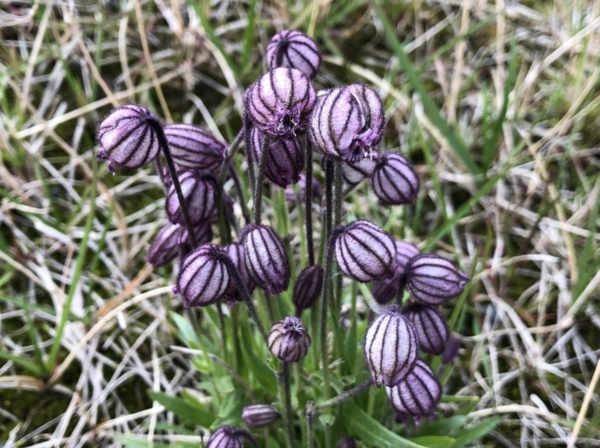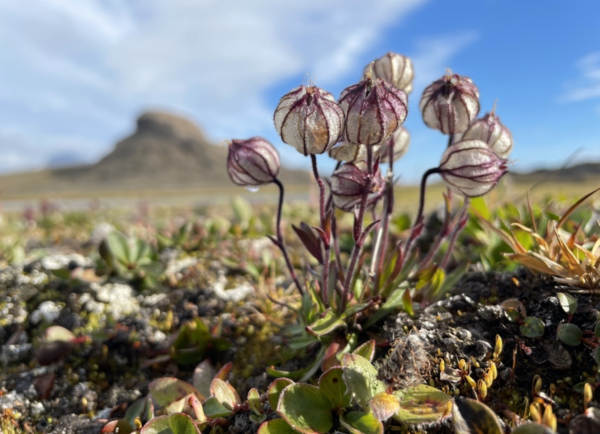Silene uralensis, also known as the Ural Catchfly, is a fascinating plant species native to the Arctic regions. Its ability to thrive in extreme conditions, coupled with its unique appearance, makes it a subject of great interest among botanists and nature enthusiasts. This article explores its taxonomy, morphology, habitat, and ecological importance, providing a comprehensive overview of this Arctic wonder.
Kingdom: Plantae
Clade: Angiosperms
Clade: Eudicots
Clade: Caryophyllales
Family: Caryophyllaceae (Pink family)
Genus: Silene
Species: Silene uralensis
Silene uralensis is closely related to other Arctic and sub-Arctic species, such as Silene involucrata, with which it shares overlapping habitats and morphological similarities.

This perennial herb grows as a solitary or clumped plant with a vertical, branched underground rhizome. Its stems are upright, typically 5–12 cm tall, and covered with glandular hairs that give the plant a distinctive appearance.
The leaves of Silene uralensis are opposite and entire. Basal leaves are 1.5–3 cm long, narrowly lanceolate, and covered with fine hairs along the edges. Stem leaves are smaller and narrower, with the uppermost pair being the smallest.
The plant's flowers are a striking feature. Each stem bears one or a few flowers in a cymose arrangement. The bell-shaped flowers have five sepals and five petals that are pale purple or pinkish-gray. The petals are slightly fringed and extend just beyond the calyx, giving a delicate, understated look. During pollination, the flowers droop, but they straighten up once pollination is complete.
The calyx becomes inflated and rounded as the plant transitions to the fruiting stage, a characteristic that aids in seed dispersal.
The fruit is a capsule that splits into 10 parts when mature, releasing numerous seeds. The seeds are brown, winged, and about 1.4–2 mm in size, enabling wind-assisted dispersal over short distances.
Silene uralensis thrives in moderately moist tundra, grasslands, riverbanks, and shallow wetlands. It grows best in well-drained soils with a mix of fine particles, which are typically weakly acidic to slightly alkaline. The plant’s adaptability allows it to survive in exposed locations with minimal snow cover during winter.

This species is distributed across the Arctic, including regions of Canada, Greenland, Russia, and the Svalbard archipelago. While it is widespread in the Arctic, it is less common in areas with highly acidic soils.
Silene uralensis is predominantly self-pollinating. Its nearly closed flowers and enclosed stamens facilitate this process, ensuring seed production even in the absence of pollinators.
The seeds, equipped with wing-like structures, are designed for wind dispersal. However, their size and weight limit their travel distance. The plant’s stiff stems and upright capsules ensure that seeds are only released under strong wind conditions, optimizing their initial placement for survival.
Silene uralensis plays a vital role in Arctic ecosystems:
Soil Stabilization: Its root system helps anchor soil in tundra environments, reducing erosion.
Food Source: The plant’s flowers, fruits, and foliage serve as food for local fauna, including reindeer, snow buntings, and ptarmigans.
Climate Indicator: As a cold-adapted species, its presence and growth patterns provide valuable insights into the effects of climate change in Arctic regions.

Silene uralensis is often compared to its close relative, Silene involucrata. The two species share many similarities but can be distinguished by:
Flower Position: S. uralensis flowers droop during blooming, while S. involucrata flowers remain upright.
Calyx Size: S. uralensis has a larger, more inflated calyx, particularly during the fruiting stage.
Stickiness: S. involucrata has more glandular hairs, making it stickier and more prone to collecting dust and debris than S. uralensis.
Silene uralensis exhibits several adaptations that allow it to thrive in harsh Arctic conditions:
Cold Resistance: It can survive freezing temperatures and short growing seasons.
Efficient Reproduction: Its self-pollination ability ensures seed production in low-pollinator environments.
Seed Dispersal Mechanism: The winged seeds and stiff stems enable controlled dispersal, minimizing seed loss.
While Silene uralensis is not currently endangered, its Arctic habitat is under threat from climate change. Rising temperatures and melting permafrost could alter the delicate ecosystems where this plant thrives. Monitoring its populations can serve as a key indicator of environmental shifts in the Arctic.
Silene uralensis is a remarkable example of nature’s resilience. From its delicate flowers to its robust reproductive strategies, this Arctic plant has evolved to withstand some of the harshest conditions on Earth. Its study not only deepens our understanding of Arctic biodiversity but also highlights the importance of conserving fragile ecosystems in a rapidly changing world.
For those intrigued by Arctic flora, Silene uralensis stands as a testament to the beauty and tenacity of life in extreme environments.
animal tags: Silene-uralensis
We created this article in conjunction with AI technology, then made sure it was fact-checked and edited by a Animals Top editor.